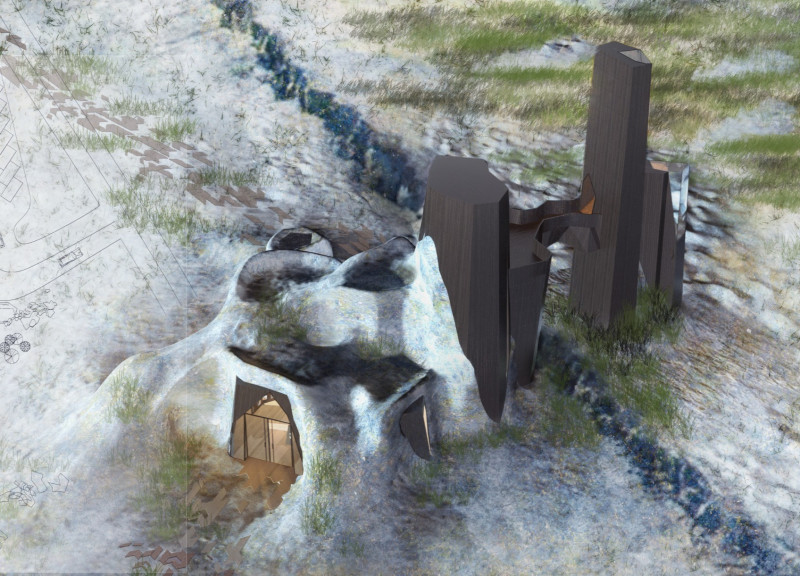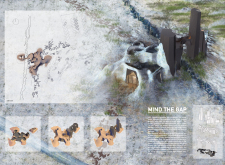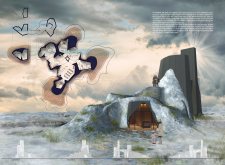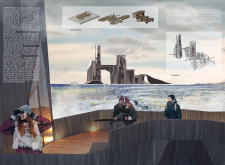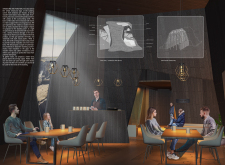5 key facts about this project
The visitor center is located between the Eurasian and North American tectonic plates. It aims to offer a space for visitors to connect with the surrounding landscape, which is marked by dramatic geological features. The design concept emphasizes connectivity, both between the two landmasses and with the natural environment. Form and layout play significant roles in highlighting the forces of nature and creating an engaging experience for all.
Form and Layout
The structure consists of two main sections connected by a bridge. This arrangement visually represents the separation and connection of the tectonic plates. Visitors are invited to explore the space while moving through the building and the landscape. The design includes angular forms and varying heights that evoke the feel of natural rock formations, creating a unique atmosphere that draws people in.
Engagement with the Environment
Inside, spaces are designed to enhance visitors’ experiences, with openings that allow views of the landscape. These architectural features mimic the cracks found in the earth, establishing a connection between the building and its geological setting. Parts of the structure are covered with soil, which helps soften the sharp edges of the architecture. This integration with the landscape decreases the visual impact on the surroundings and promotes harmony.
Functional Aspects
The layout encourages smooth circulation, with a central reception area that functions as the heart of the building. This hub provides easy access to information and services, allowing for effective visitor management. Nearby, the waiting area and café are positioned to offer views of the surrounding fissures. These spaces invite visitors to relax and appreciate the unique geological features while they take a break.
Design Detail
A notable aspect of the design is the North American section, culminating in a tower that stands about twenty meters tall. This vertical structure not only provides stunning views of the land but also serves as a reminder of the geological layers below. The light that shines from the pinnacle helps highlight its presence in the landscape, creating a sense of connection between the architecture and the natural environment.


